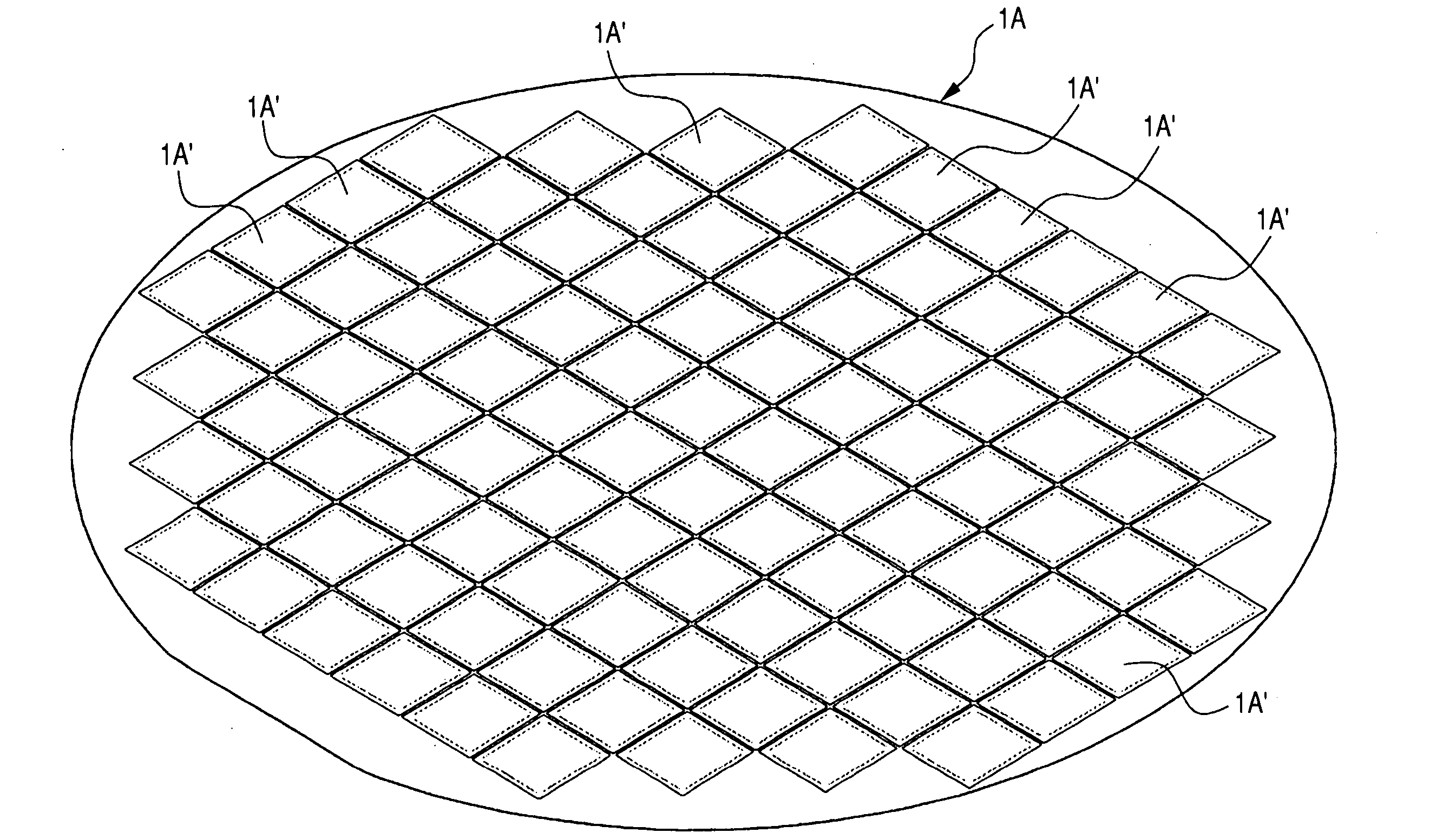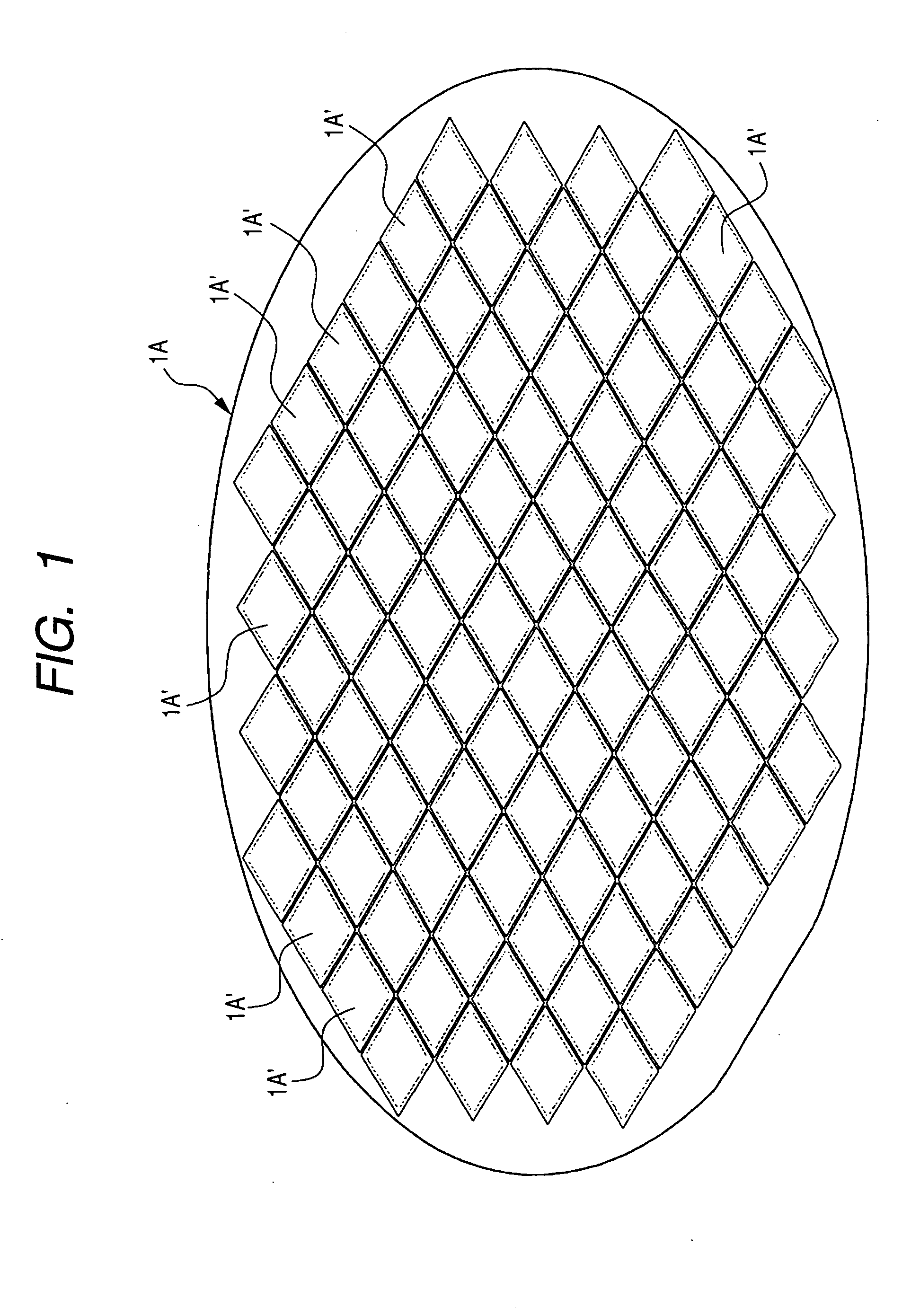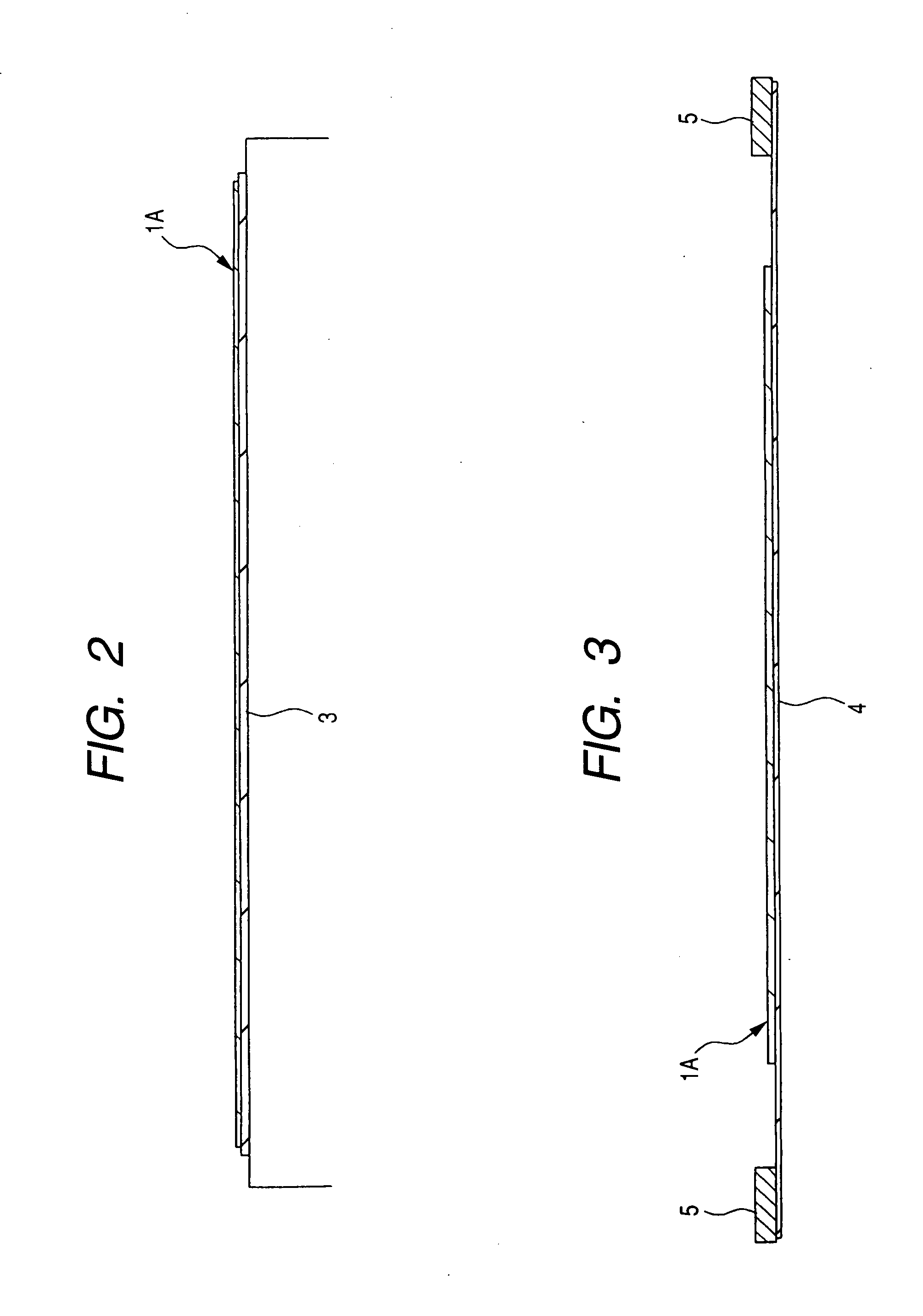Method of manufacturing semiconductor device
a manufacturing method and technology for semiconductor devices, applied in the direction of semiconductor devices, basic electric elements, electrical equipment, etc., can solve the problems of difficult to peel off the chips of non-ultraviolet curing type adhesive tape, and reducing the adhesive strength
- Summary
- Abstract
- Description
- Claims
- Application Information
AI Technical Summary
Benefits of technology
Problems solved by technology
Method used
Image
Examples
embodiment 1
[0073] (Embodiment 1)
[0074] This embodiment is applied to the manufacture of a semiconductor package which mounts chips on a printed circuit wiring board. A method of manufacture of the semiconductor package will be explained in the order of the steps thereof in conjunction with FIG. 1 to FIG. 25.
[0075] First of all, an integrated circuit is formed over a main surface of a wafer 1A made of single crystal silicon, as shown in FIG. 1, in accordance with a well-known manufacturing process; and, thereafter, an electric test is performed on integrated circuits which are respectively formed on a plurality of chip forming regions 1A′, which are defined by grid-like scribe lines, so as to judge whether respective chip forming regions 1A′ are defective or non-defective. The chip forming region 1A′ used in this embodiment has a square planar shape, with longitudinal and lateral lengths which are equal.
[0076] Next, as shown in FIG. 2, a back grind tape 3 for protecting the integrated circuit...
embodiment 2
[0114] (Embodiment 2)
[0115] The above-mentioned embodiment 1 adopts a method in which, first of all, three blocks 110a to 110c are simultaneously pushed upwardly, and, thereafter, the intermediate block 110b and the inner block 110c are further pushed up, and, finally, the inner block 110c is further pushed upwardly so as to peel off the chip 1 from the dicing tape 4.
[0116] On the contrary, as shown in FIG. 28, first of all, three blocks 110a to 110c are simultaneously pushed upwardly so as to uniformly peel off the whole peripheral portion of the chip 1 from the dicing tape 4, and, thereafter, as shown in FIG. 29, the outer block 110a is lowered to cause the peeling of the chip 1 from the dicing tape 4 to progress in a direction toward the center of the chip 1. Then, as a final step, as shown in FIG. 30, the intermediate block 110b is lowered to further cause the peeling of the chip 1 from the dicing tape 4 to progress in the direction toward the center of the chip 1, so as to com...
embodiment 3
[0119] (Embodiment 3)
[0120] The above-mentioned embodiment 1 has been directed to a case in which the chip 1 which represents the object to be peeled off has a square shape. However, to peel off a rectangular chip 1 having longitudinal and lateral lengths which differ from each other, for example, as shown in FIG. 31, three rectangular blocks 210a to 210c which differ in size are used. Due to such a constitution, it is possible to efficiently cause the peeling to progress by focusing the stress on the peeling start point of the chip 1 and the dicing tape 4, while reducing the bending stress applied to the chip 1. Here, as the outer block 210a having the largest diameter, it is preferable to use a block having a diameter slightly smaller than the chip 1 which represents the object to be peeled, thus preventing a strong load from being applied to the outermost portion of the chip 1.
[0121] To peel off the chip 1 using the rectangular blocks 210a to 210c, first of all, as shown in FIG....
PUM
 Login to View More
Login to View More Abstract
Description
Claims
Application Information
 Login to View More
Login to View More - R&D
- Intellectual Property
- Life Sciences
- Materials
- Tech Scout
- Unparalleled Data Quality
- Higher Quality Content
- 60% Fewer Hallucinations
Browse by: Latest US Patents, China's latest patents, Technical Efficacy Thesaurus, Application Domain, Technology Topic, Popular Technical Reports.
© 2025 PatSnap. All rights reserved.Legal|Privacy policy|Modern Slavery Act Transparency Statement|Sitemap|About US| Contact US: help@patsnap.com



